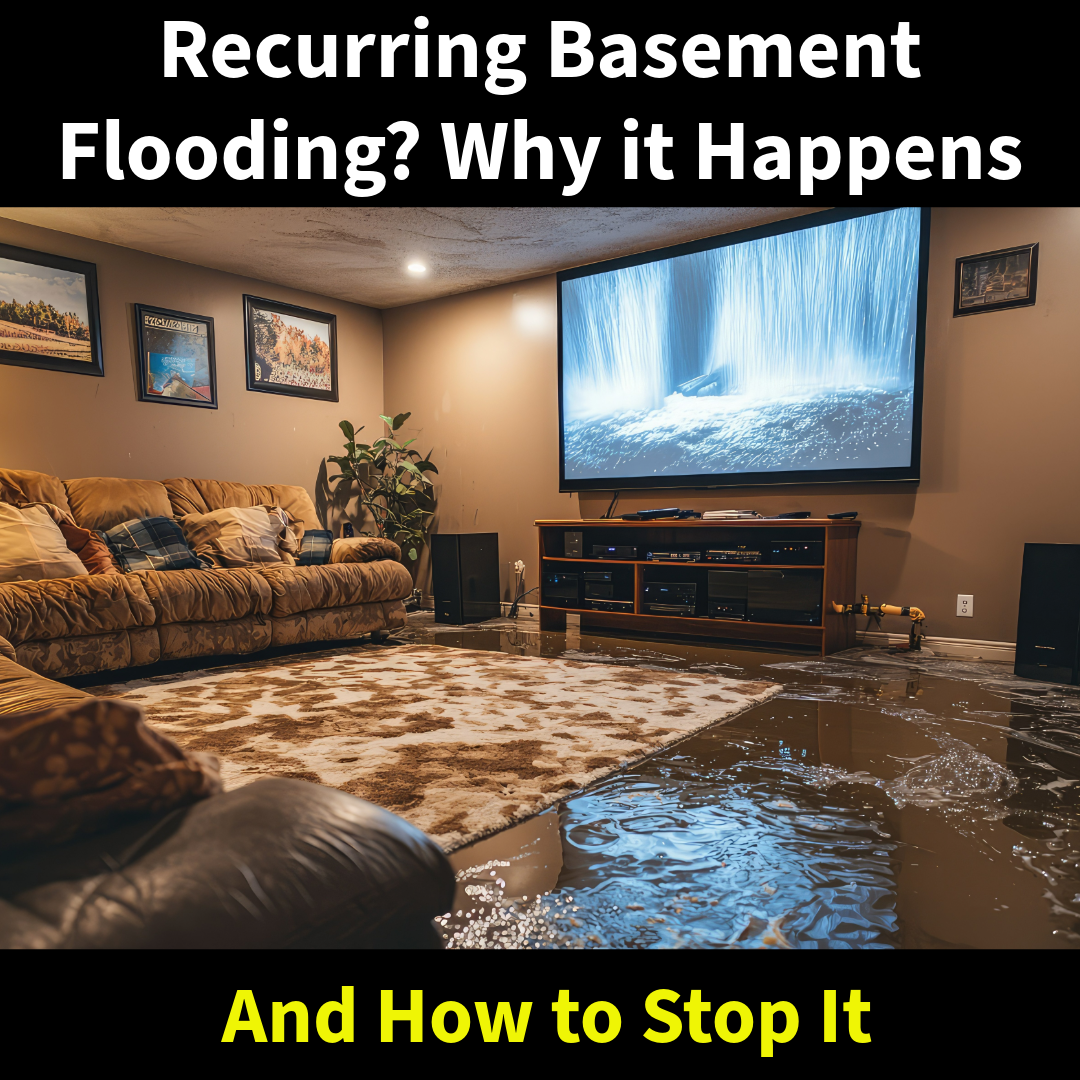It’s a scenario homeowners know all too well: a heavy rain rolls in, and once again, water is creeping into the basement. You mop it up, maybe even install a small sump pump, and hope it’s the last time. But then it happens again—and again. If this sounds familiar, you’re not alone. At MSI, we’ve seen countless cases where recurring basement flooding turns from a nuisance into a full-blown disaster.
Here’s why it keeps happening—and more importantly, how to stop it.
Common Causes of Recurring Basement Flooding
Basement water isn’t always about a single bad storm or a broken pipe. In many cases, it’s the result of a chronic issue that hasn’t been fully addressed. Here are the most common causes:
1. Poor Grading and Drainage Around the Foundation
If your yard slopes toward your house rather than away from it, you’re inviting water right to your foundation. Add clogged gutters or short downspouts, and rainwater will saturate the soil and push its way into your basement walls.
2. Hydrostatic Pressure
When the soil around your foundation becomes overly saturated, it creates pressure that pushes water through even the tiniest cracks in concrete. This type of seepage can happen repeatedly—even in homes without visible damage—especially if the water has nowhere else to go.
3. Failing or Inadequate Sump Pump System
A sump pump is your basement’s first line of defense. But if it’s undersized, old, or missing altogether, water will accumulate quickly. And if your pump doesn’t have a battery backup, a power outage during a storm leaves your basement vulnerable.
4. Cracks in the Foundation or Walls
Even hairline cracks can let water in—especially during freeze-thaw cycles when they expand. Over time, water infiltration leads to mold, structural issues, and property damage.
5. Leaking Window Wells or Bulkheads
Older or improperly sealed basement windows are a common failure point. Water collects in the wells and seeps through the frame or surrounding masonry.
Why This Isn’t Just a One-Time Problem
Recurring basement water is more than just annoying—it’s a sign that something is failing behind the scenes. And each time water enters your home, it’s doing more damage than you might see on the surface:
- Mold growth begins within 24-48 hours.
- Insulation and drywall lose integrity with every wetting.
- Wood rot and framing damage can happen invisibly behind walls.
- Air quality deteriorates, especially if mold spores enter the HVAC system.
How to Permanently Solve Basement Water Problems
A quick patch won’t do the trick. If you’re serious about ending recurring flooding, here’s what you should be considering:
✅ Improve Exterior Drainage
Re-grade the soil around the home to slope away from the foundation. Extend downspouts at least 6–10 feet away. Clean your gutters regularly.
✅ Install or Upgrade a Sump Pump
Invest in a quality sump pump with a battery backup system. Consider installing a water-level alarm for early warnings.
✅ Seal Cracks and Waterproof the Walls
Professional-grade epoxy or polyurethane injection can seal foundation cracks. For major issues, exterior waterproofing membranes may be required.
✅ Install a French Drain or Interior Drain Tile System
These systems collect and redirect groundwater before it can enter your home, making them one of the most effective long-term solutions.
✅ Dehumidify to Prevent Mold
Basements tend to be humid even without standing water. A commercial-grade dehumidifier keeps humidity levels in check and helps prevent mold before it starts.
Final Thoughts
If you’re constantly dealing with basement flooding, it’s not bad luck—it’s a solvable problem. The key is identifying the real cause and addressing it head-on, not just cleaning up the mess each time.
At MSI, we’ve helped thousands of homeowners stop basement flooding for good by combining waterproofing strategies with mold prevention. The sooner you act, the less damage—and cost—you’ll face.

